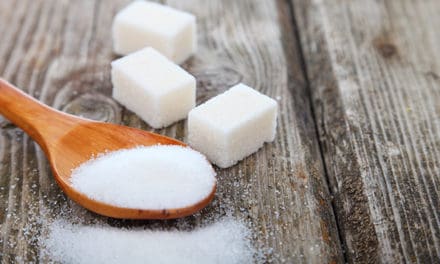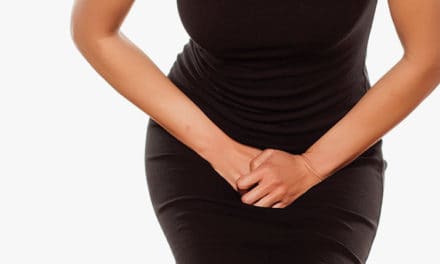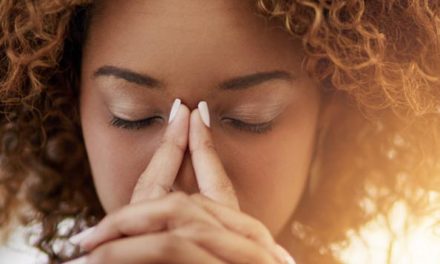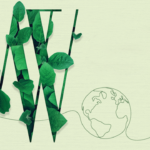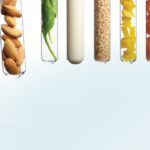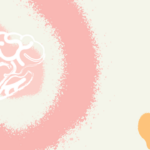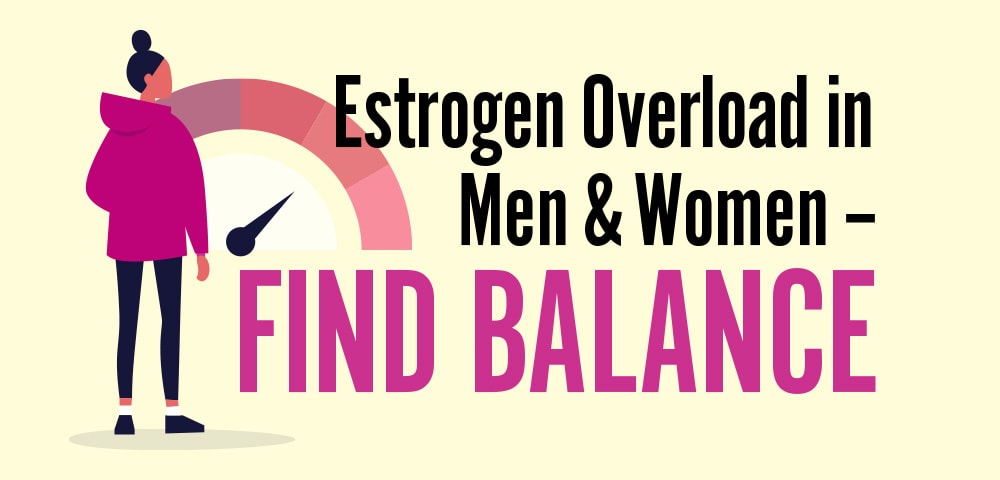
Did you know it is possible to have too much estrogen?
We often hear about estrogen deficiency in relation to menopause; however there are growing concerns about the negative effects of excess estrogen, a condition known as estrogen dominance. Of course, estrogen is recognized as the main female sex hormone, but men also have estrogen!
There are three naturally occurring estrogens: estradiol made primarily in the ovaries, plus estrone and estriol made in the liver from estradiol. Our fat cells and adrenal glands also produce small amounts of estrogen. Estrogens not only influence the health of our reproductive system, but have significant effects on bone, brain, heart, and breast health. In men, estrogen helps support libido, erectile function, and sperm production.
Unfortunately, we are living in a sea of estrogens and our estrogen homeostasis is being disrupted. Either through too much internal production or excess exposure to xenoestrogens (synthetic estrogens) from our external environment, many women and men are suffering from the effects of estrogen imbalance. Certain medications, pesticide-laden food and water, gut dysbiosis, and plastic use are common sources of xenoestrogens, which are structurally or functionally related to estradiol and bind to estrogen receptors.
In women, estrogen dominance can lead to mood swings, hair loss, low libido, slow metabolism, foggy thinking, and is related to conditions such as polycystic ovary syndrome (PCOS), endometriosis, and thyroid dysfunction. Elevated estrogen can also cause problems for men. In fact, one study discovered an association between increased levels of estradiol and symptoms of depression in men. Men with high levels of estrogen may present signs of fatigue, enlarged breasts, low muscle mass, infertility, low libido, and erectile dysfunction.
Despite this, there’s good news! We can all take steps to reduce our exposure to harmful estrogens and support their proper elimination from the body.
Key tips to supporting hormone balance in women, men, and children for a healthy future:
Reduce plastic use
What do some plastics, pesticides, cosmetics, and detergents have in common? Many contain xeno- estrogens which act as endocrine disruptors, interfering with natural hormone balance. Bisphenols (BPA and BPS), phthalates, and parabens are a few examples of these compounds that interfere with estrogen receptors and influence estrogen metabolism. Reducing the use of plastic products is one way we can reduce our exposure to these endocrine disruptors.
Avoid single-use plastics such as drinking straws and plastic cutlery, replace plastic grocery bags with reusable cloth bags, switch plastic food and water containers with glass or stainless-steel containers, plus properly recycle plastic waste. Declining printed store receipts, avoiding plastic children’s toys, and purchasing personal care products and household cleaners that do not contain these chemicals, are additional ways to avoid endocrine disruptors and support hormone balance.
Balance hormones with nutrition
Synthetic hormones injected into animals, plus pesticides and herbicides used on fruits and vegetables, are examples of endocrine disruptors in our food supply. Drinking water and food packaging are additional sources of xenoestrogens. In one study, seven out of 10 water bottles and 44% of food packaging samples had estrogenic activity. To overcome these effects, select organic, pasture-raised or 100% grass-fed animal products, and increase your consumption of plant-based proteins by incorporating more beans, legumes, nuts, seeds, and plant-based protein powders into meals. Be sure to also check the Dirty Dozen™ annual food list provided by the Environmental Working Group (EWG), which outlines the top 12 foods that have the highest levels of toxic pesticides and should ideally be avoided or purchased as organic.
The EWG is a reputable resource for information regarding reduced toxin exposure to protect the environment and personal health. Visit ewg.org for more information. Although a balanced diet aids our intake of key essential nutrients, it is important to obtain appropriate intake of vitamin B6, magnesium, zinc, and other key nutrients that will support the conversion, break-down, and elimination of estrogen. A high-quality multivitamin-mineral supplement can help fill any existing nutritional gaps.
Support your liver and gut
The liver is involved in the metabolism of estrogens into safe forms or conjugated estrogens, so they can be properly excreted by a healthy intestinal tract to minimize reabsorption. Unfortunately, this does not always happen. A study of women injected with radio-labeled estrogen found that 65% of estradiol actually reversed back to an active form that could be reabsorbed by the intestine. How can this happen? The answer is simple – an unhealthy estrobolome.
In one study, seven out of 10 water bottles and 44% of food packaging samples had estrogenic activity.
The estrobolome is the intestinal microbiome that plays a role in metabolizing and excreting estrogen metabolites. An unhealthy estrobolome can lead to high levels of beta-glucuronidase, the enzyme that can deconjugate estrogen to its active form causing it to be reabsorbed. The health of the estrobolome is influenced by diet, alcohol, and antibiotic use, and can be supported with high-quality probiotics, fermented foods and fiber. Interestingly, low-fiber diets have been linked to estrogen elevation and poor estrogen excretion.
Appropriate fiber intake can support the estrobolome and reduce reabsorption of estrogen in the bowel. Supporting the health of the liver with simple activities such as drinking lemon water, minimizing alcohol intake, eating liver-supporting foods such as beets and dandelion, and using liver-supporting herbs like milk thistle. Promote
Estrogen Metabolism with Supplements
We can support estrogen metabolism by supplementing with specific nutrients and herbs. Indole-3-carbinol for example is a phytochemical found in cruciferous vegetables such as broccoli, cabbage, brussels sprouts, cauliflower, and kale. Supplementation with indole-3-carbinol has been shown to positively influence estrogen metabolism by promoting the production of 2-hydroxyestrone (often called the “good” estrogen) and preventing the production of 16α-hydroxyestrone (often called the “bad” estrogen).
In addition, the use of calcium- D-glucarate has been shown to inhibit beta-glucuronidase so that estrogen remains conjugated for safe excretion from the body. Look for supplements that combine these important ingredients along with herbal extracts such as milk thistle and turmeric to help promote liver detoxification and healthy estrogen metabolism.
Dirty Dozen
EWG’s 2021 Shopper’s Guide to Pesticides in Produce™
■ Strawberries ■ Spinach ■ Kale, collard, and mustard greens
■ Nectarines ■ Apples ■ Grapes ■ Cherries ■ Peaches ■ Pears
■ Bell and hot peppers ■ Celery ■ Tomatoes Visit ewg.org for more information.


